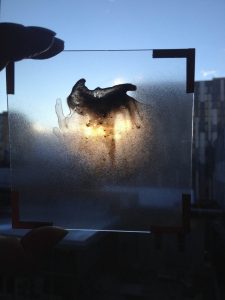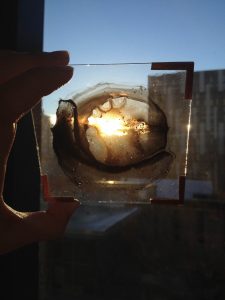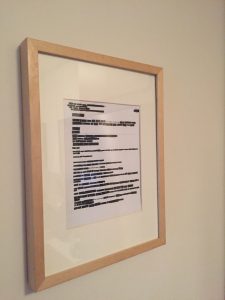For the creative responses for Scott Massey, we made two parts. Part 1 will be presented in class later today and part 2 is a glass-sculptural piece. It was inspired by Scott’s works: Carbon Black Hole, The sun was born in darkness, to shine for a time, only to return to darkness, and Cloudmaking.
The idea was to integrate Scott’s studies and fascination with science and the terrestrial as well as extract some inspiration from his own pieces to create our own response.
It consists of several glass slides with copper corners, each of which have a unique india ink stain. The slides sit in a wooden box (similar to our contribution to Scott’s wooden boxes at the CAG auction) with black felt at the bottom of the box. When the slides are layered and presented in light, the density of the layers creates a unified darkening effect, blotting out the light. However, when showed and displayed from its side, it plays and refracts light in interesting ways, allowing the piece to be maneuvered and displayed from different angles. The idea was to create a piece that would “absorb” light like a black hole, but also play with it and reflect it. Much of this project was about trying to “think like Scott would”. Individually, each slide presents itself to look like macro micro-organisms on “lab slides”, because each ink layer has its own texture and has its own life-like movements. The construction of the numerous slides operates like the apparatus of a lens, in which is obstructs and skews the source of light and image through several layers before reaching the human eye.
This will be made as a gift for Scott.





Layered:



